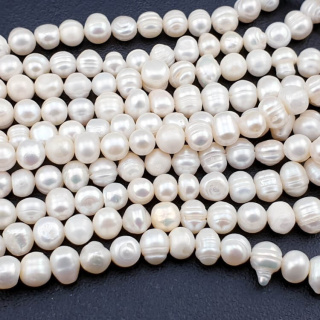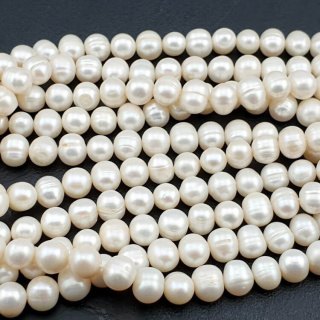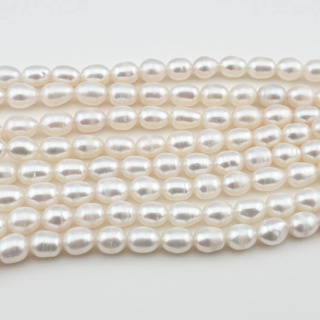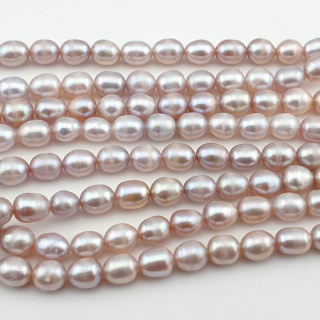- ...
-
Kategorie
- Kamienie | Minerały
- Koraliki do biżuterii
- Półfabrykaty jubilerskie
- Kamienie syntetyczne
- Kamienie wg zodiaku
- Perły | Muszle
- Zawieszki
- Bransoletki
- Kryształki - Taśmy
- Kamienie A-F
- Kamienie G-K
- Kamienie L-O
-
Kamienie P-Z
- Perydot
- Pietersyt
- Piryt
- Prehnit
- Purpuryt
- Rodochrozyt
- Rodonit
- Rubin
- Selenit
- Septaria
- Serafinit
- Serafinit indyjski
- Serpentynit
- Skamieniałe drewno
- Skapolit kocie oko
- Skolecyt
- Sodalit
- Stichtyt
- Szatukit
- Szelit
- Szungit
- Tektyt
- Thulit
- Topaz
- Turkus tybetański
- Turmalin
- Tygrysie oko
- Tygrysie żelazo
- Unakit
- Waryscyt
- Wyprzedaż
- Okazje 💵
- Wyprzedaże 🛒
- Nowości💥
- Rabaty
- Dostawa
- Płatność
- Zwroty
- Kontakt
- Blog
- Kryształki - taśmy (sale -40%)
-
Kategorie
-
Perydot
-
Pietersyt
-
Piryt
-
Prehnit
-
Purpuryt
-
Rodochrozyt
-
Rodonit
-
Rubin
-
Selenit
-
Septaria
-
Serafinit
-
Serafinit indyjski
-
Serpentynit
-
Skamieniałe drewno
-
Skapolit kocie oko
-
Skolecyt
-
Sodalit
-
Stichtyt
-
Szatukit
-
Szelit
-
Szungit
-
Tektyt
-
Thulit
-
Topaz
-
Turkus tybetański
-
Turmalin
-
Tygrysie oko
-
Tygrysie żelazo
-
Unakit
-
Waryscyt
Kamienie P-Z -
- Okazje 💵
- Wyprzedaże 🛒
- Nowości💥
- Rabaty
- Dostawa
- Płatność
- Zwroty
- Kontakt
- Blog
- Kryształki - taśmy (sale -40%)
-
Perły - niezwykły dar natury
Liczba produktów: 5Perły, od wieków uważane za symbole luksusu i klasy, nadal fascynują swoim naturalnym połyskiem i eleganckim wyglądem. Koraliki wykonane z pereł dodają wyjątkowego uroku każdemu projektowi biżuterii, a także pozwalają na tworzenie niezwykłych wzorów i stylów. Zapraszamy do odkrywania naszej kolekcji perłowych koralików i doświadczania magii, jaką niosą ze sobą te drobne skarby natury. Niech perły staną się inspiracją do tworzenia biżuterii, która podkreśli Twoją wyjątkowość i styl.
Co to jest perła hodowana?
Perła hodowana, znana również jako perła hodowlana, to perła, która powstaje w wyniku kontrolowanego procesu hodowania, w którym człowiek wprowadza ciało obce (nazywane zarodkiem lub jądrem) do muszli ostrygi lub małża. Są różne od prawdziwych pereł, które powstają w sposób całkowicie naturalny, bez ingerencji człowieka.
Oto kilka kluczowych cech pereł z hodowli:
- Hodowanie: Perły są tworzone poprzez umieszczenie jądra wewnątrz muszli ostrygi lub małża. Proces ten jest nadzorowany i kontrolowany przez człowieka.
- Jądro: Jądro, znane również jako zarodek lub ciało obce, jest umieszczane w muszli. Może to być mała kulka wykonana z materiału takiego jak szklana kula lub fragment perły lub muszli innej ostrygi.
- Czas tworzenia: Perły rosną w ciągu kilku lat. Czas ten może różnić się w zależności od typu perły, warunków hodowlanych i pożądanego rozmiaru i jakości perły.
- Jakość i kształt: Perły różnią się pod względem jakości i kształtu. Ich jakość może być oceniana na podstawie takich czynników, jak połysk, barwa, gładkość powierzchni i brak wad.
- Kontrola jakości: Producenci starają się kontrolować jakość perły poprzez nadzór nad środowiskiem hodowlanym, dbałość o odpowiednie warunki wodne i żywienie małży lub ostryg oraz regularne przeglądy hodowli.
- Różne typy: Istnieje wiele różnych typów pereł naturalnych hodowlanych, w tym hodowlane słodkowodne, perły morskie, perły Tahiti i wiele innych. Każdy typ ma swoje unikalne cechy.
Perły naturalne hodowlane są cenione za swoje piękno i różnorodność, i stanowią ważny element w produkcji biżuterii i ozdób. Są one dostępne w różnych rozmiarach, kształtach i kolorach, co daje projektantom biżuterii szeroki zakres możliwości tworzenia różnorodnych i unikalnych dzieł sztuki.
Jakie są główne różnice między perłami naturalnymi hodowlanymi, a perłami naturalnymi?
Główne różnice między perłami naturalnymi hodowlanymi, a perłami prawdziwymi (naturalnymi) obejmują:
Proces powstawania perły
Perły hodowane powstają w wyniku celowego procesu hodowlanego, w którym człowiek wprowadza jądro (ciało obce) do muszli małża lub ostrygi, co inicjuje proces tworzenia perły. Perły całkowicie naturalne powstają całkowicie naturalnie, gdy ciało obce przypadkowo dostanie się do muszli lub ostrygi. Proces ten nie jest kontrolowany przez człowieka.
Rynek i dostępność pereł
Cena
Perły hodowlane są zazwyczaj tańsze niż perły całkowicie naturalne, choć ich cena może być znacznie zróżnicowana w zależności od jakości i kształtu. Perły prawdziwe są zazwyczaj znacznie droższe ze względu na ich rzadkość i unikalność.
Kształt i jakość
W procesie hodowli można kontrolować kształt i jakość perły w pewnym stopniu, co pozwala na uzyskanie bardziej jednolitych i idealnych kształtów. Perły prawdziwe mają naturalne kształty i mogą różnić się pod względem jakości, a wiele z nich może mieć nieregularne kształty i niewielkie wady.
Wielkość i kolor
Wielkość i kolor perły hodowlanej mogą być kontrolowane przez dobór odpowiednich hodowlanych odmian i warunków hodowlanych. Perły prawdziwe są bardziej zróżnicowane pod względem wielkości i koloru, ponieważ są wynikiem procesów naturalnych.
Zrównoważony rozwój
Hodowanie jest zrównoważone i może pomagać w ochronie naturalnych populacji małży i ostryg. Wydobycie prawdziwych pereł może wpływać na populacje małży i ostryg oraz na ekosystemy morskie.
Obie perły hodowlane i naturalne są cenione w przemyśle jubilerskim, ale różnią się pod wieloma względami, od procesu powstawania po cenę i dostępność. Wybór między nimi zależy od osobistych preferencji, budżetu i celów jubilerskich.
Jakie są różnice między perłami słodkowodnymi, a morskimi hodowanymi?
Perły z hodowli mogą być zarówno słodkowodne, jak i morskie, a istnieją pewne istotne różnice między tymi dwiema kategoriami. Oto główne różnice między hodowlanymi słodkowodnymi, a morskimi perłami:
- Źródło hodowli: perły słodkowodne hodowlane powstają w słodkich wodach, takich jak jeziora, rzeki i stawy. Morskie są hodowane w słonych wodach oceanów lub mórz.
- Środowisko hodowli: słodkowodne są hodowane w stacjach hodowli słodkowodnej, gdzie warunki mogą być kontrolowane, morskie natomiast są hodowane w naturalnym środowisku morskim, zwykle na farmach perłowych.
- Hodowla w jednym muszlu: W jednym małżu słodkowodnym można hodować wiele pereł, co jest bardziej efektywne pod względem kosztów. W jednym małżu morskim hoduje się tylko jedną perłę, co sprawia, że proces jest mniej efektywny.
- Wielkość i kształt: słodkowodne są zazwyczaj mniejsze niż morskie i często mają bardziej regularne kształty. Morskie mogą być większe i bardziej różnorodne pod względem kształtu, w tym bardziej nieregularne.
- Kolory pereł hodowlanych: słodkowodne perły mogą występować w różnych kolorach, w tym białym, różowym, fioletowym, niebieskim i złotym. Morskie charakteryzują się bardziej klasycznymi kolorami, takimi jak biały, kremowy, srebrny, czarny czy zielony.
- Cena: Perły słodkowodne hodowane są zazwyczaj tańsze niż perły morskie hodowane, co czyni je bardziej dostępnymi dla szerokiego spektrum klientów.
- Trwałość: Perły słodkowodne hodowane mogą być mniej trwałe niż morskie, ale odpowiednia pielęgnacja może przedłużyć ich żywotność. Perły morskie są znane z trwałości i długotrwałości.
Czy perły z hodowli są trwalsze od prawdziwych pereł naturalnych?
W ogólnym rozumieniu wszystkie perły są trwałe, ale istnieją pewne różnice w ich właściwościach, które mogą wpłynąć na ich trwałość w zależności od okoliczności. Oto kilka kwestii, które warto uwzględnić:
- Hodowla kontrolowana: hodowanie pereł zapewnia kontrolowane środowisko, co pozwala na nadzór nad ich jakością i warunkami rozwoju. Dzięki temu są mniej podatne na uszkodzenia spowodowane czynnikami środowiskowymi.
- Jakość warunków hodowlanych: Hodowcy pereł starają się utrzymywać odpowiednie warunki hodowlane, takie jak czysta woda i odpowiednie żywienie małży lub ostryg. Dobre warunki mogą wpłynąć na trwałość pereł hodowanych.
- Cienka warstwa nacre: Perły hodowane mają tendencję do posiadania cienkiej warstwy perłowego nacre (macicy perłowej), co może wpłynąć na ich trwałość w dłuższym okresie.
- Czynniki środowiskowe: Perły naturalne i hodowane mogą być podatne na działanie czynników środowiskowych, takich jak chemikalia, promieniowanie UV czy zanieczyszczenia. Dlatego istotne jest odpowiednie przechowywanie i pielęgnacja perł.
- Uszkodzenia mechaniczne: Wszystkie perły, mogą ulec uszkodzeniom mechanicznym, takim jak zadrapania, obtarcia czy pęknięcia. Trwałość perły zależy również od tego, jak ostrożnie się z nią obchodzi.






